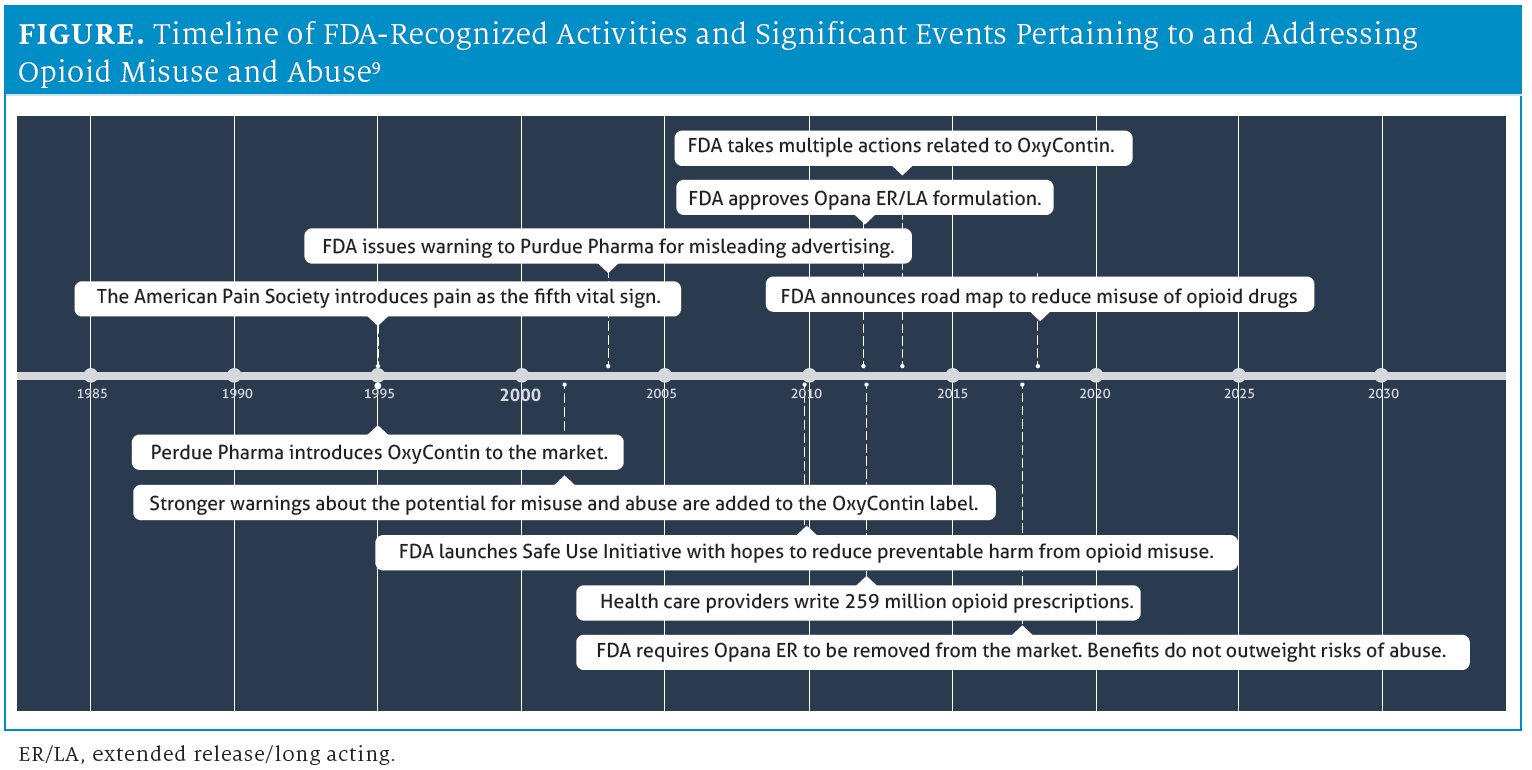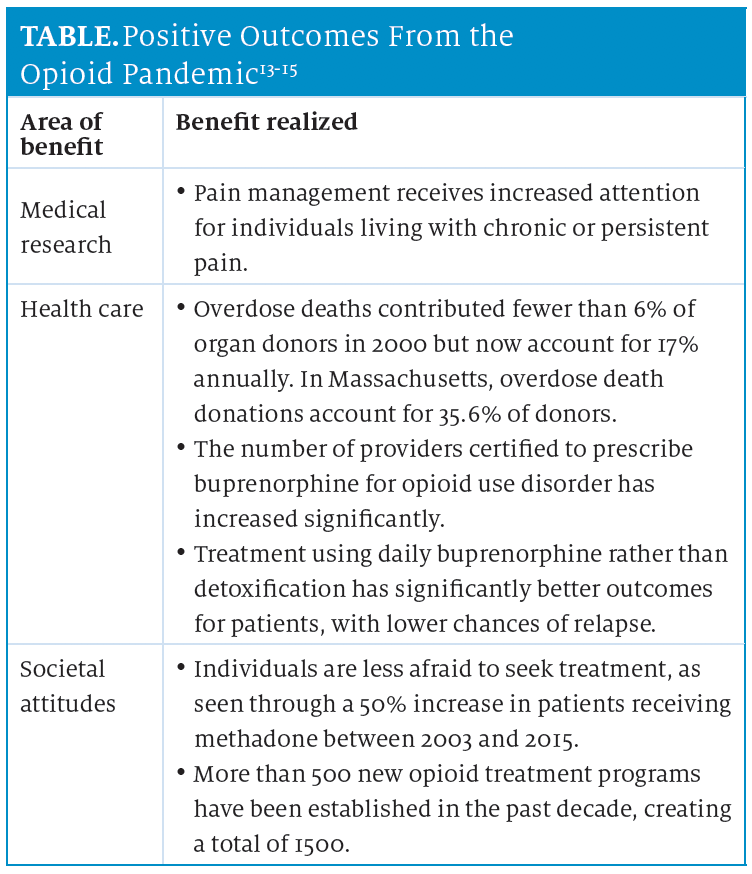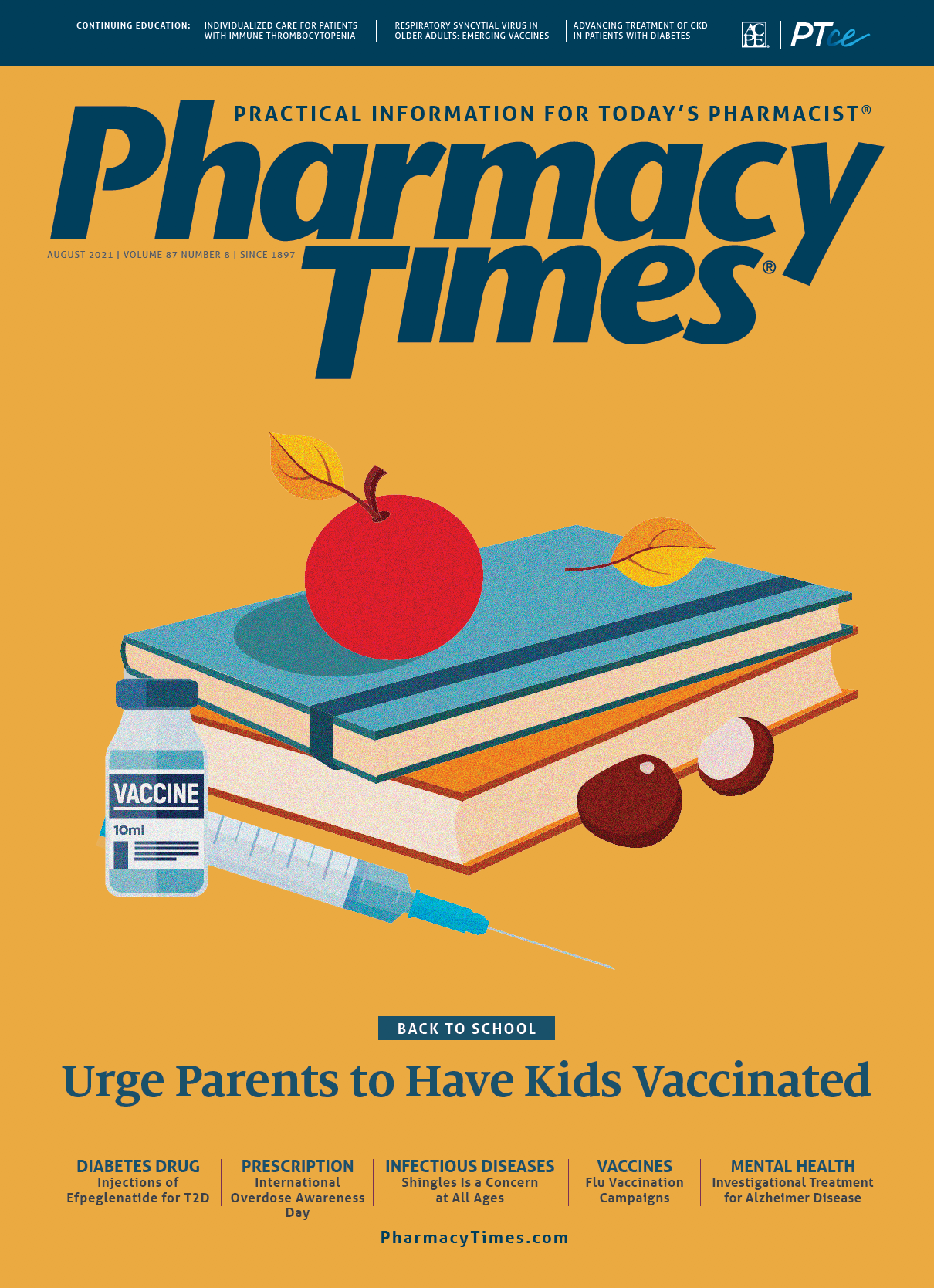Publication
Article
Pharmacy Times
International Overdose Awareness Day Is Somber Reminder
Author(s):
Pharmacists carry a unique responsibility in the battle that has claimed 500,000 lives in the past 2 decades.
International Overdose Awareness Day is August 31 each year.
This somber day functions as a remembrance of more than 500,000 lives lost and a reminder of how far we have come in combatting addiction across America.1 True awareness requires reflection on the crisis' origins, actions to mitigate its consequences, and ideas to move us forward to overcome this opioid pandemic.
THE BEGINNINGS
Several factors initiated the opioid pandemic and propelled its growth. The American Pain Society introduced pain as the fifth vital sign in 1995.2 That same year, Purdue Pharma marketed oxycodone (OxyContin), employing marketing campaigns that emphasized the benefits that extended pain relief provided while downplaying the implications. Purdue, as well as Allergan, Endo International, and Teva Pharmaceutical Industries Ltd, also downplayed the serious risk and likelihood of addiction that occurs with their opioids.3
Fast-forward 17 years, and prescribers had written more than 259 million opioid prescriptions, enough for every adult in the country to have a bottle of pills.4
Advertising and false information concerning extended-release opioids' addictive properties are not the only reasons this epidemic continued to spiral.5 The FDA found that several major drug distributors were complicit in the unregulated narcotics distribution.
Distributors shipped a staggering number of shipments to retail pharmacies across the country, neither questioning nor reporting them to the Drug Enforcement Administration.3
Chain retailers operated within loopholes of the law to dispense opioids to an unwitting public.
Some tactics include providing seminars on pain management and safety, self-policing opioid orders without oversight, and using work-arounds to evade hard limits on purchasing.6
MITIGATION THAT WORKS
The United States has enacted legislation and constructed evidence-based guidelines over the past 5 years to mitigate excessive opioid use. The CDC issued evidence-based guidelines in 2016 for prescribing opioids for chronic pain in adults. The recommendations include prescribing the lowest effective dose and analyzing risks and benefits when prescribing up to 50 morphine milligram equivalents (MME) per day. Prescribers should avoid or justify daily doses of 90 MME or more.7 The Centers for Medicare & Medicaid Services followed in the CDC's footsteps in 2018; Medicare Part D sponsors must limit opioid prescriptions to 7 dates in opioid-naive patients.8
Stricter regulations on opioids have provided mixed outcomes. Approximately 80% of new heroin users reported that prescription pills were their gateway.4 Individuals suffering from opioid use disorder have drug-seeking behaviors that cannot be corrected through law.
When obtaining a prescription becomes too difficult, their next step is finding illicit drugs.
The figure summarizes the FDA's actions pertaining to the opioid crisis over the past 20 years.9

GATEKEEPING ON THE BENCH
Pharmacists carry a unique responsibility in the fight against opioid abuse. Pharmacists in community settings are the final gatekeepers to ensure that opioid prescriptions are legitimate, employed in accordance with guidelines, and dispensed according to the law. Pharmacist-provided patient counseling and education, especially for opioid-naive patients, can make all the difference. The first step to combatting the opioid crisis is being aware of the issue and spreading knowledge about it.10
Public awareness has significantly increased over the past 5 years. Just 6 states had laws that expanded access to naloxone or limited criminal liability prior to 2012. By the end of 2017, 46 states and the District of Columbia enacted laws that provide protection for laypeople or first responders who administer naloxone.
In addition, 46 states now have statutes that allow pharmacists to dispense naloxone to third parties or first responders via direct prescription or standing order.11 The FDA approved the nasal spray formulation of naloxone for use in the community setting without medical training being required in April 2019.12
This FDA approval takes an all-hands-on-deck approach, with statistical models suggesting that 21% of opioid overdose deaths can be averted.10
GRIM SILVER LININGS
Although preventable overdose-related deaths still occur daily, not all lives lost are in vain. The table lists the unexpected benefits evolving from the opioid crisis.13-15

CONCLUSION
The loss of life due to an opioid overdose does not have to be senseless. We can learn from our failures and forge forward on a path that emphasizes awareness and understanding. Let's end the stigma surrounding addiction and provide individuals with the resources they need to recover. Open dialogue is critical. Pharmacists play a key role in combatting this scourge.
Christopher Epps is a PharmD candidate at the University of Connecticut School of Pharmacy in Storrs.
REFERENCES
1. Bernstein L. Major drugstore chains sue doctors in sprawling federal opioid case. Washington Post. January 8, 2020. Accessed July 1, 2021. https://www.washingtonpost.com/health/major-drugstore-chains-sue-doctors-in-sprawling-federal-opioid-case/2020/01/07/3ac9cd70-317d-11ea-9313-6cba89b1b9fb_story.html
2. Hedegaard H, Miniño AM, Warner M. Drug overdose deaths in the United States, 1999–2017. CDC. Updated November 29, 2018. Accessed July 1, 2021. https://www.cdc.gov/nchs/products/databriefs/db329.htm
3. Randazzo S. Drugmakers go on trial over opioid epidemic. Wall Street Journal. April 18, 2021. Accessed July 1, 2021. https://www.wsj.com/articles/drugmakers-go-on-trial-over-opioid-epidemic-11618758002
4. Madras BK. The president’s commission on combating drug addiction and the opioid crisis: origins and recommendations. Clin Pharmacol Ther. 2018;103(6):943-945. doi:10.1002/cpt.1050
5. Anderson J. ‘The Crime of the Century’ review: manufacturing the opioid epidemic. Wall Street Journal. May 6, 2021. Accessed July 1, 2021. https://www.wsj.com/articles/the-crime-of-the-century-review-manufacturing-the-opioid-epidemic-11620339231
6. Hoffman J. Big pharmacy chains also fed the opioid epidemic, court filing says. New York Times. May 27, 2020.Accessed July 1, 2021. https://www.nytimes.com/2020/05/27/health/opioids-pharmacy-cvs-litigation.html
7. Dowell D, Haegerich TM, Chou R. CDC guideline for prescribing opioids for chronic pain — United States, 2016. MMWR Recomm Rep. 2016;65(1):1-49. doi:10.15585/mmwr.rr6501e1
8. Anson P. Medicare finalizes plan to reduce high dose opioids. Pain News Network. April 2, 2018. Accessed July 1, 2021. https://www.painnewsnetwork.org/stories/2018/4/2/medicare-finalizes-plan-to-reduce-high-dose-opioids
9. Timeline of selected FDA activities and significant events addressing opioid misuse and abuse. FDA. Updated July 2, 2021. Accessed July 20, 2021. https://www.fda.gov/drugs/information-drug-class/timeline-selected-fda-activities-and-significant-events-addressing-opioid-misuse-and-abuse
10. Compton WM, Jones CM, Stein JB, Wargo EM. Promising roles for pharmacists in addressing the U.S. opioid crisis. Res Social Adm Pharm. 2019;15(8):910-916. doi:10.1016/j.sapharm.2017.12.009
11. Davis C, Carr D. State legal innovations to encourage naloxone dispensing. J Am Pharm Assoc (2003). 2017;57(2S):S180-S184. doi:10.1016/j.japh.2016.11.007
12. FDA approves first generic naloxone nasal spray to treat opioid overdose. News release. FDA. April 19, 2019. Accessed July 1, 2021. https://www.fda.gov/news-events/press-announcements/fda-approves-first-generic-naloxone-nasal-spray-treat-opioid-overdose
13. Dinerstein C. Opioid crisis’ grim silver lining: more organs for transplant. American Council on Science and Health. April 16, 2018. Accessed July 1, 2021. https://www.acsh.org/news/2018/04/16/opioid-crisis%E2%80%99-grim-silver-lining-more-organs-transplant-12842
14. Osborne S. The ‘silver lining’ of the opioid crisis: more pain research. Medscape. November 18, 2019. Accessed July 1, 2021. https://www.medscape.com/viewarticle/921497
15. Hamm S. New strategies for combating the opioid epidemic. Yale School of Medicine. 2018. Accessed July 1, 2021. https://www.medicine.yale.edu/news/yale-medicine-magazine/new-strategies-for-combating-the-opioid-epidemic/


FDA Approves Dupilumab, Marking First Targeted Therapy in a Decade for Chronic Spontaneous Urticaria




